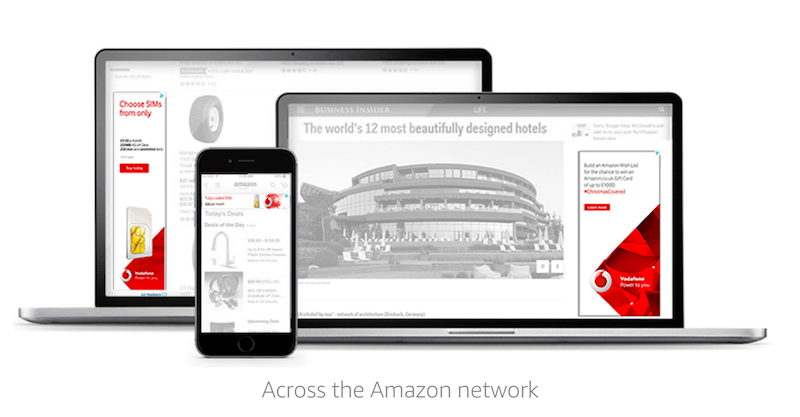Co-op advertising is nothing new. Retailers and brands have long partnered to share advertising costs and drive additional sales. Traditional co-op advertising agreements are visible in TV spots and every Sunday circular driving avocado buyers to Whole Foods.
About 80% of today’s co-op advertising dollars are spent offline. However, most retailers spend the vast majority of their ad dollars online. Hence, co-op advertising lags far behind the overall advertising market. We’re seeing co-op dollars moving online fast to close that gap.
Once again, Amazon is leading the way. Its digital ad business already surpasses Microsoft and Yahoo. Amazon’s earnings report suggests that its ad business will generate more than $8 billion this year. Its ad revenue comes primarily from Sponsored Products, which are paid product placements that run on-site, and its retargeting offering — the ability to advertise to people based on the products those people have viewed or purchased on Amazon.com.

Amazon’s ad revenue, then, comes from co-op. And now everyone else is following Amazon’s lead. Google’s new co-op products – Sponsored Product Ads and a co-op PLA (Product Listing Ad) solution, aim to compete with Amazon, while Microsoft, Criteo (via HookLogic) and others are working to capitalize on the market dynamics and push the co-op solutions beyond just Amazon.
The main obstacles that have held back the growth of digital co-op were a lack of automation, reporting capabilities and transparency. These problems are being solved, allowing digital co-op to take off.
Amazon and other retailers have become publishers, in a sense: They are selling their ad inventory to brands. As they do with all publishers, brands should understand and check the numbers these retailer-publishers are giving them.
At the moment, competition is still relatively low and ad inventory on retailers’ sites is still cheap. Brands that get measurement right and invest their budgets wisely have a huge opportunity to drive profitable sales.
Brand challenges
Yet this move towards a digital co-op strategy comes with serious challenges.
- With this increased set of options available via co-op, plus their own direct-to-consumer sites, brands must decide the most effective way to spend their advertising dollars.
- Sponsored product ads and co-op seem like great ways to get additional exposure, but smart brands know the value of their inventory – and should be firm when determining they are getting adequate value.
- Both retailers and brands need to make sure that their organizations are structured in a way that enables them to take best advantage of the opportunity. The silos separating merchandising and advertising must be broken – and companies should facilitate shared communication across pricing, promotion, and distribution.
Econsultancy’s head of US research, Stefan Tornquist, and author Andreas Reiffen will be delving into these issues in a free webinar at noon eastern time on October 3rd. Register to join their conversation.
And if you’ll be in New York on October 10th, join Econsultancy, Andreas and retailers from Footlocker, Staples, Bose, Under Armour and many more — at [New York] Know Go, for a full day of retail insider programming, conversation, and networking — and the opportunity to explore our industry’s most pressing issues as a community.
As part of our blog and webinar event, we have arranged for a 50% discount for Econsultancy readers on “All Access” passes. Please RSVP today and use the code: ECON18 to receive this Econsultancy special discount.